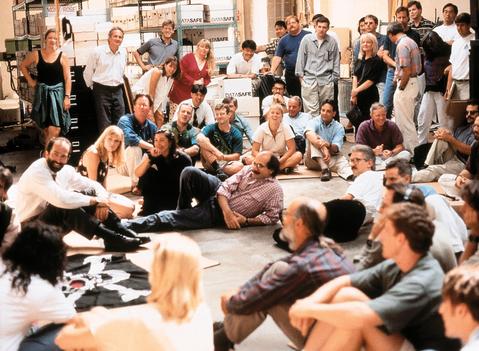“If you want to create change, you have to see that change in yourself first and foremost.”
–Owen Rogers, IDEO Partner and Senior Design Lead
As an IDEO Partner and Senior Design Lead, Owen Rogers works with companies on some of their biggest and most complex organizational challenges. In this Creative Confidence Series episode, Suz chats with Owen about the human-centered approach to creating sustainable change within organizations, his tips for unlocking leaders’ creative potential, and the importance of having the right kind of naysayers on your team.
Together with his team, Owen’s work is focused on helping leaders and their organizations evolve and grow through human-centered design. Facing change isn’t always easy—especially when it’s a competitor taking market share, a start-up suddenly disrupting the space, or a product becoming obsolete. IDEO partners with clients spanning a wide range of industries to develop the organizational structures, culture, and behaviors that drive their success, and ultimately to build creative capabilities within these companies so they can continue to innovate and adapt.
In a recent multi-year collaboration, Owen and his team partnered with one of the world’s busiest airports to transform their organization with a purpose-led workforce. The journey began with becoming more passenger-centered.
“Most organizations are top-down, but the design process isn’t.”
The First Piece of the Puzzle
Airports are huge, complex, and a big pain for travelers. To get the lay of the land, the client took Owen on a four-hour tour of the airport, going through security checkpoints, experiencing gate check, browsing in stores, and eating in restaurants. One of the major challenges was immediately clear: the airport’s operations were totally siloed. No single entity owned the passengers’ experience through the airport. The first piece of the puzzle wasn’t going to be a wizbang design idea, but finding a way to unify a disjointed experience in a space where at least five major players have control—including the government security administration.
The key was getting all the different business units and partners to think with the same passenger-centered mindset. “Everyone has had the struggles of going through airport security,” Owen says. “With the human-centered design process, we can put people in that situation and take them through a workshop to find solutions.” That stream of work brought together siloed teams and led to three ideas that were implemented in the security administration’s pilot, including a specially-designed bench to help passengers get their belongings together after security.

Top-Down vs. a Groundswell
Most organizations are top-down, but the design process isn’t; human-centered design is inclusive and allows ideas to come from all parts of the organization. We invite people from a variety of teams and levels to participate in the work, to get a diversity of perspectives and to allow people to feel ownership of the solutions.
At this particular location, some 1,400 employees run the airport within a broader ecosystem of more than 45,000 partners and vendors. In order to bring the airport’s purpose to life, the design team first engaged the 1,400 employees, inviting them to bring an artifact that represented their passion for their jobs to a kickoff workshop. Not only did their stories surface the deep care and commitment the employees had for their work, it also helped everyone galvanize around their shared goal—to improve the passenger experience. Over the course of the work, the employees’ pride and enthusiasm—coupled with a renewed sense of purpose—motivated them to address problems that extended beyond their day-to-day responsibilities. For example, they became more apt to help a passenger find their way to a gate or fill an empty bathroom soap dispenser.
“Human-centered design is inclusive and allows ideas to come from all parts of the organization.”
The Right Kind of Naysayers
Every project comes with its share of naysayers, but, Owen says, there are two different kinds: people who don’t want a new project to succeed, and those who don’t believe that it will. Those who don’t believe but actively want to engage in a conversation are the right kind of naysayers to have at the table. “The conversion with those people has some of the most dramatic effect,” Owen says.
For the airport collaboration, that skeptic was the man who was in charge of the security administration for the airport, the one who was always blamed for its problems. Not only did he engage in the workshop, he understood that all the members of the team were trying to do the right thing, and they understood his motivation, too. Ultimately, he was the one who presented their work to the board. “That to me was dramatic,” Owen says. “Because everybody knew this guy, and they knew that he was a classic naysayer. And so for him to come in and present the work that actually shifted what his team had to do was profound.”
That said, every project needs its fair share of enthusiasts (aka co-conspirators), too—and people who can deal with a certain level of ambiguity along the journey. And as Owen says, “If you want to create change, you have to see that change in yourself first and foremost.”
Curious to learn more about designing for change? Take a deep dive with our online course Designing for Change. Enroll here.
- choosing a selection results in a full page refresh
- press the space key then arrow keys to make a selection



